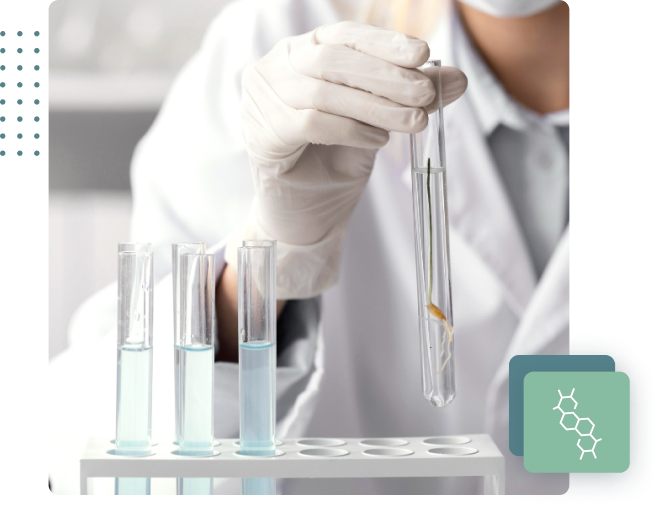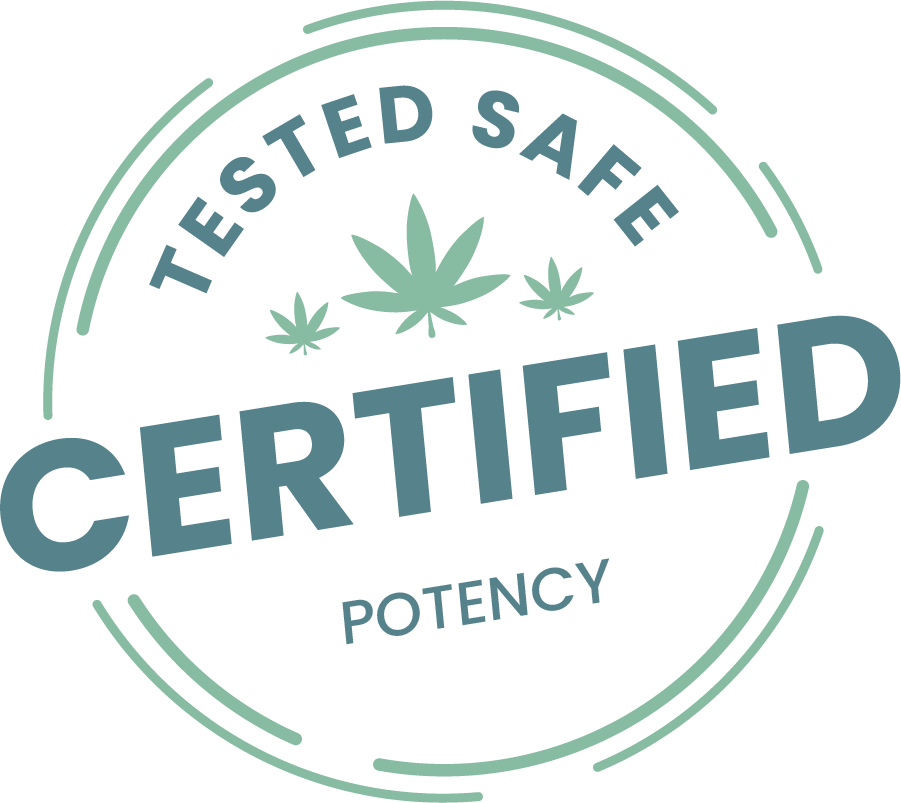Services
Potency Testing
-
MATRIX
Flowers/Plants, Derivative Products and Edibles
-
ANALYTES
11 – 22 count
-
INSTRUMENT
LCUV
Going Above & Beyond THC and CBD in Potency Testing
Cannabis potency testing determines the number of cannabinoids present in your cannabis sample as well as their potency. CannaLabs uses Ultra-High-Performance Liquid Chromatography (HPLC), which is the recommended instrument for testing cannabis edibles and extracts because it can analyze samples at room temperature without the use of a catalyst. A gas chromatograph would not be able to test for THC Acid (THCA) or CBD Acid (CBDA) with this method.
- Δ9-THC
- Δ8-THC
- Δ9-THCA
- THCV
- CBD
- CBDA
- CBDV
- CBG
- CBGA
- CBC
- CBN
- Δ10-THC
- CBNA
- CBCA
- CBDVA
- CBL
- THCVA
- CBT
- Δ8-THCV
- EXO-THC
- Δ9-THCOa
- Δ8-THCOa
- HU-331
- Acetic Anhydride
Potency 11
- Δ9-THC
- Δ8-THC
- Δ9-THCA
- THCV
- CBD
- CBDA
- CBDV
- CBG
- CBGA
- CBC
- CBN
- Δ10-THC
- CBNA
- CBCA
- CBDVA
- CBL
- THCVA
- CBT
- Δ8-THCV
- EXO-THC
- Δ9-THCOa
- Δ8-THCOa
- HU-331
- Acetic Anhydride
Potency 12
- Δ9-THC
- Δ8-THC
- Δ9-THCA
- THCV
- CBD
- CBDA
- CBDV
- CBG
- CBGA
- CBC
- CBN
- Δ10-THC
- CBNA
- CBCA
- CBDVA
- CBL
- THCVA
- CBT
- Δ8-THCV
- EXO-THC
- Δ9-THCOa
- Δ8-THCOa
- HU-331
- Acetic Anhydride
Potency 22
- Δ9-THC
- Δ8-THC
- Δ9-THCA
- THCV
- CBD
- CBDA
- CBDV
- CBG
- CBGA
- CBC
- CBN
- Δ10-THC
- CBNA
- CBCA
- CBDVA
- CBL
- THCVA
- CBT
- Δ8-THCV
- EXO-THC
- Δ9-THCOa
- Δ8-THCOa
- HU-331
- Acetic Anhydride
THCOa Safety Bundle
- Δ9-THC
- Δ8-THC
- Δ9-THCA
- THCV
- CBD
- CBDA
- CBDV
- CBG
- CBGA
- CBC
- CBN
- Δ10-THC
- CBNA
- CBCA
- CBDVA
- CBL
- THCVA
- CBT
- Δ8-THCV
- EXO-THC
- Δ9-THCOa
- Δ8-THCOa
- HU-331
- Acetic Anhydride
Additional Insights for Consumers
It's critical to evaluate the cannabinoids included in your products, as well as their potency when selecting which cannabis strains the best suit your customers' demands. Cannabinoids are chemical molecules generated by cannabis flowers that replicate the actions of endocannabinoids, which the human body naturally produces. Endocannabinoids interact with the endocannabinoid system (ECS) of the human body, assisting us in maintaining homeostasis. As a result, cannabinoids can be an important aspect of human health and decide the therapeutic value of your product.


Potency Testing and its Scientific and Legal Aspects
As laws in the United States continue to change, standardized and consistent potency testing is required to keep consumers safe from undesired side effects. Testing for potency is essential for hemp to demonstrate that it contains less than the maximum allowable amount of THC (0.3 percent ).
Legal and Scientific
Potency testing also allows scientists to investigate how cannabinoids may behave differently depending on whether they are found in flowers, oils, or topicals. This type of research can improve your ability to advertise your product to the specific customers who will gain the most from its impacts.
To meet market demand for high THC or CBD levels, it's also critical to evaluate your product's potency. You may also use potency findings to provide your customers with the information they need to figure out what dose is right for them based on their symptoms. Customers may engage with their dispensary professional to identify the optimal strain for them when a product's cannabinoid profile is transparent and documented.

Getting More Accurate & Conclusive Potency Results
Cannabinoids are typically found in the plant resin produced by structures called trichomes. Insects, animals, fungus, light contaminators, and other environmental threats are all thwarted by trichomes. Terpenes, which are responsible for the plant's scent, taste, and therapeutic properties, are abundant in the sticky resin.
The greatest way to modify your plant's cannabinoid profile is to choose a seed with genes that can create the potency you want. If you reside in the mountains, for example, you can choose a seed that was specifically designed for high-altitude growth. However, micronutrients, temperature exposure, humidity levels, harvest methods, and water quality can all affect how much resin a plant generates.
Heat, for example, can prevent resin synthesis, so keep temperatures as low as possible–especially during the plant's bloom cycle's later phases. Throughout the harvest, pay particular attention to the color of the trichomes. Trichomes that are clear and translucent aren't ready to be processed yet. The plant has reached appropriate quantities of cannabinoids when the trichomes lose their opacity and take on an amber tint.
FAQ
Faqs On Potency Testing
Get Started





